The 25 most important events in the history of the formation of the Earth
The first "cloud of love" probably took place 1.2 billion years ago. While the blue planet, which contains more than 7 billion people, was once "white" like a snowball like some of Jupiter's moons. In this part 2 we will continue to follow the evolutionary history from 375 million years ago.
Important historical milestones of the Earth
13. First Amphibian | 375 million years ago
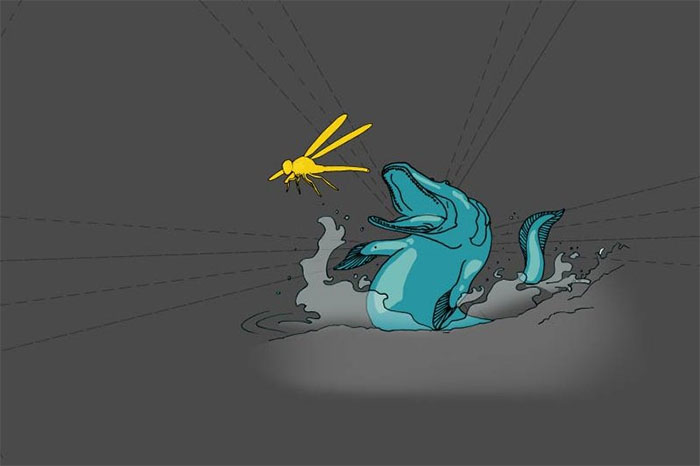
Some vertebrates are "seduced" by food sources such as insects.
After plants have settled on the ground, animals do not hesitate to find new "homes". The first are insects that crawled to the surface about 400 million years ago. But vertebrates soon followed, such as the Tiktaalik, a fish similar in appearance to a salamander, but whose legs are still composed of fins.
Fish like Tiktaalik eventually evolved to be four-legged, the ancestors of amphibians, reptiles, and mammals. The fact that they left the water is considered a blessing because it was immediately followed by the late Devonian extinction. This extinction "ends" many other aquatic species, including giant fish with armored bodies.
14. Reptile Dawn | 320 million years ago
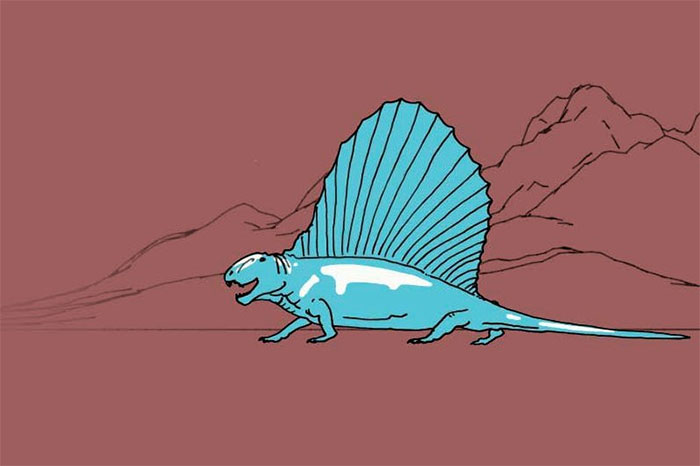
It looks similar, but the first reptiles weren't dinosaurs.
When the first reptiles appeared, Earth was in the midst of a prolonged cold period known as the Late Paleozoic Era. Reptiles evolved from amphibians similar to salamanders. But unlike their ancestors, reptiles have thick, scaly skin and lay eggs with hard shells different from when they were in the water.
Thanks to the above advantages, reptiles quickly became the dominant species on the ground. And, although some species are extremely large, like Dimetrodon up to 4.5 meters long, it is still a reptile, not a dinosaur. The age of dinosaurs is far from over.
15. Supercontinent Pangea | 300 million years ago

There was a period when Son Tinh - Thuy Tinh divided clear boundaries on the globe.
For the last time until now, Earth's continents merged once and formed a supercontinent called Pangaea. And surrounding the supercontinent is a. super ocean called Panthalassa.
This phase 2 "superpowers" coexisted for up to 175 million years. 10 million years later, the continents separated again and the remains became what we see today.
16. Biggest Extinction | 252 million years ago

Massive volcanic eruptions are also a threat to many species.
Although not the first extinction, the last extinction of the Permian period was the biggest challenge for life on Earth. It is estimated that up to 96 % of aquatic species and an equal number of terrestrial species disappear after this period.
The reason for the extinction is still uncertain. But archaeological data suggest a mass volcanic eruption, also known as the Siberian Traps, left 2 million square kilometers of Earth's surface inundated with lava, and the atmosphere filled with smoke. poison and ocean temperatures up to 40 °C, could be the culprit.
The restoration of the living world then ushered in a new era - the age of the dinosaurs.
17. The First Mammal | 220 million years ago

Mammals were born at the same time as dinosaurs, but could not compete.
At the same time that dinosaurs evolved and proliferated across the globe, the first mammals appeared. Their ancestors were reptiles called cynodonts, with faces somewhat like dogs and some possibly covered with fur.
Early mammals such as Morganucodon were rather small in size and rat-like in appearance. Most likely they are only active at night because this is when reptiles rest. It is hypothesized that it was this nocturnal activity that stimulated mammals to evolve towards using warm blood - allowing them to maintain a stable body temperature to feed while reptiles are less active at night. .
18. Triassic extinction | 201 million years ago

Despite experiencing a major extinction, the dinosaurs continued to recover and dominate the earth.
The Triassic was a time when dinosaurs roared across the land, and underwater, giant reptiles like the Ichthyosaur dominated the oceans as prime predators. But another mass extinction broke out.
The cause of this extinction has not been determined, but it has resulted in the extinction of 80% of species. But soon, dinosaurs recovered and continued to dominate the earth. They even reach enormous sizes. The largest species ever recorded, Dreadnoughtus schrani, weighed nearly 60 tons.
19. The first bird | 160 million years ago
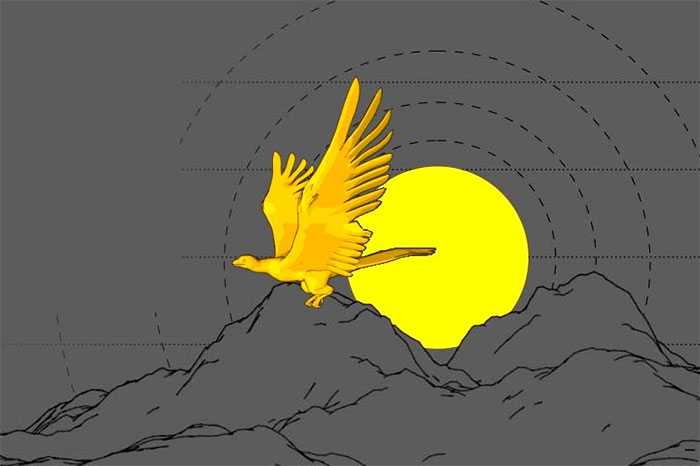
Feathered animals are descendants of today's dinosaurs.
First in the water, then on the ground, and then in the sky, life conquers all in turn. But birds did not evolve from mammals, but descended from dinosaurs. Feathered dinosaurs like Velociraptors were the ancestors of modern birds, but they had noses instead of stiff beaks and hands for clinging to trees instead of wings.
One of the famous birds ever known, Archeopteryx, lived 150 million years ago. But some recent archaeological results in China show that species such as Xiaotingia or Aurornis, appeared longer than before.
20. Flowering Plants | 130 million years ago

It takes a long time after coming to the ground, the forests are racing to show off their colors with flower branches.
It may sound strange, but flowers are the most recent "invention" of the plant world. Although the seed was planted on the ground 465 million years ago, for more than two-thirds of that time, no flowers were recorded.
Flowering plants seem to have appeared in the middle of the time when the dinosaurs existed. There are species similar to grass species that have only appeared recently. The oldest fossils of grass are only 70 million years old. Of course, the grasses may have been present for some time.
21. Dinosaur Death | 65 million years ago

Falling meteorites are considered to be the cause of the extinction of the dinosaurs.
BOOM. and you go extinct. 65 million years ago, a large rock from space crashed into the Earth at the position corresponding to present-day Mexico. The crash was terrifying, but its long-term consequences were even worse.
Dust was ejected into the upper atmosphere and blocked the sun, leading to a period of cold and darkness that extended across the entire planet. With the greatest numbers, dinosaurs are of course the ones that suffer the most. Other giant reptiles and predators were also wiped out. But smaller species survive by consuming less food.
This is also the fifth extinction ever recorded and the last to date.
22. The first primates appeared | 60 - 55 million years ago

Human ancestors started by living in trees.
The disappearance of most dinosaurs allowed mammals to grow and multiply. They quickly evolved towards having a uterus and feeding their young in the womb through the placenta. However, there is still quite a long way to go before it reaches the human race.
Some mammals have evolved to climb and live in trees, as a way to avoid other predators. This approach led to the birth of monkeys, apes, and eventually humans. But the first primates were very small in size. The oldest fossilized primate skeleton belongs to a species called Archicebus achilles, which weighs less than 30 grams. They live mainly in the hot and humid tropical forests of Asia.
23. Super Photosynthetic Plants | 32 - 25 million years ago
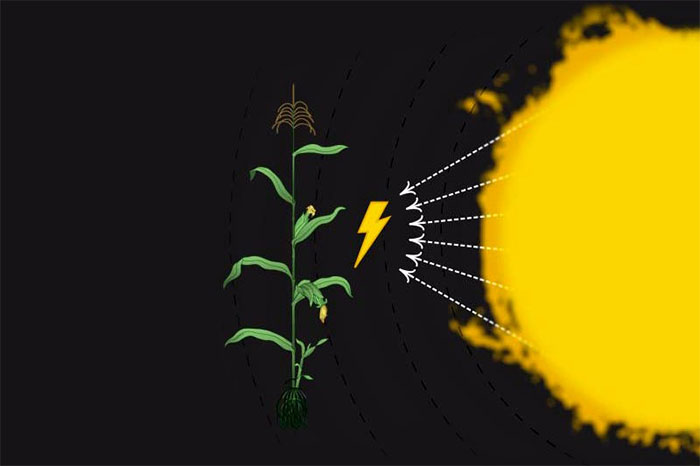
The C4 plants are mainly monocotyledonous plants, with grasses being the most numerous.
Plants have begun to harness light energy to synthesize sugars over billions of years, thanks to a process called photosynthesis. But it wasn't until recently that some species "discovered" a better way of photosynthesis, called C4 photosynthesis.
C4 photosynthesis gives higher efficiency than the common type of photosynthesis - C3. As a result, C4 plants are better able to adapt to harsh environments. Today, botanists are looking for ways to genetically modify rice plants to use C4 photosynthesis, in order to achieve higher yields for an increasingly larger population.
24. The First Apes | 13 - 7 million years ago
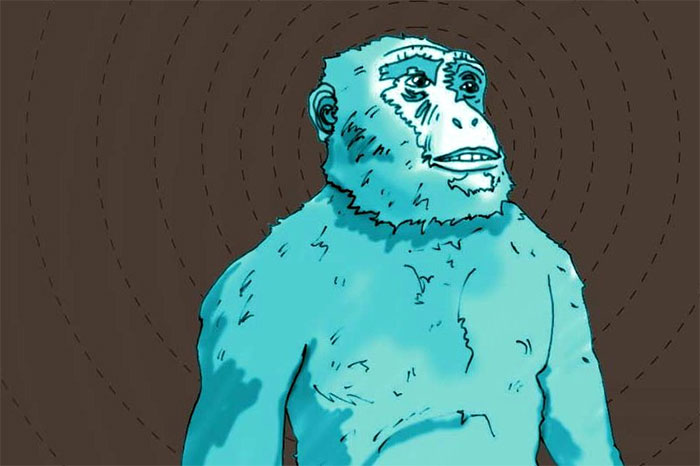
Human ancestors began to cry and were born in Africa.
The first apes appeared in Africa about 25 million years ago. Then at some point, they began to group together into the ancestors of modern apes and modern humans.
It is difficult to say exactly when the event took place, but thanks to archeology and genetic biology, we can make a relative estimate. The oldest known hominid is Sahelanthropus tchadensis, which lived on the earth 7 million years ago.
25. Modern Humans | 200,000 years ago

Although the time of appearance is very short, but humanity has almost changed the entire planet.
Our species, or the scientific name Homo sapiens, is very young compared to all previous species, only 1/5 of a million years compared to 7 million years of Sahelanthropus tchadensis. But in that "short" time, we have left our birthplace in Africa, traveling to every continent on the planet. We have even been able to go to space, something that all previous species have not been able to do.
But with the achievements we have achieved, we have also done a lot of damage to this planet. In the last 40 years alone, 50% of wildlife has disappeared from the Earth, faster than any other mass extinction (and mass extinction) ever recorded.
Will the sixth mass extinction take place in this human era? Will the 4 billion years of evolutionary history of life on the planet end at the hands of humans?
- Earth History through images (Part II)
- Earth History through images (Part I)
- Famous mystical events in history
- 7 most tragic events in human history
- World history events of particular interest that occurred in the same year
- Amazingly top incredible rare events in history
- The Kepler spacecraft has just one of the most important discoveries in its history
- 13 elements make the Earth unique
- Black matter at the bottom of the lake reveals the truth about a 'Hellish Earth'
- Be overwhelmed by the irresistible beauty of Hai Van Pass
- 10 exciting and incredible events happen in world history
- Astronomers map the history of the Universe
 The most famous scientific failures in history
The most famous scientific failures in history Mysterious genius mechanic and the machine froze time
Mysterious genius mechanic and the machine froze time The son carries the 'bad gene' of genius Albert Einstein
The son carries the 'bad gene' of genius Albert Einstein Isaac Newton
Isaac Newton